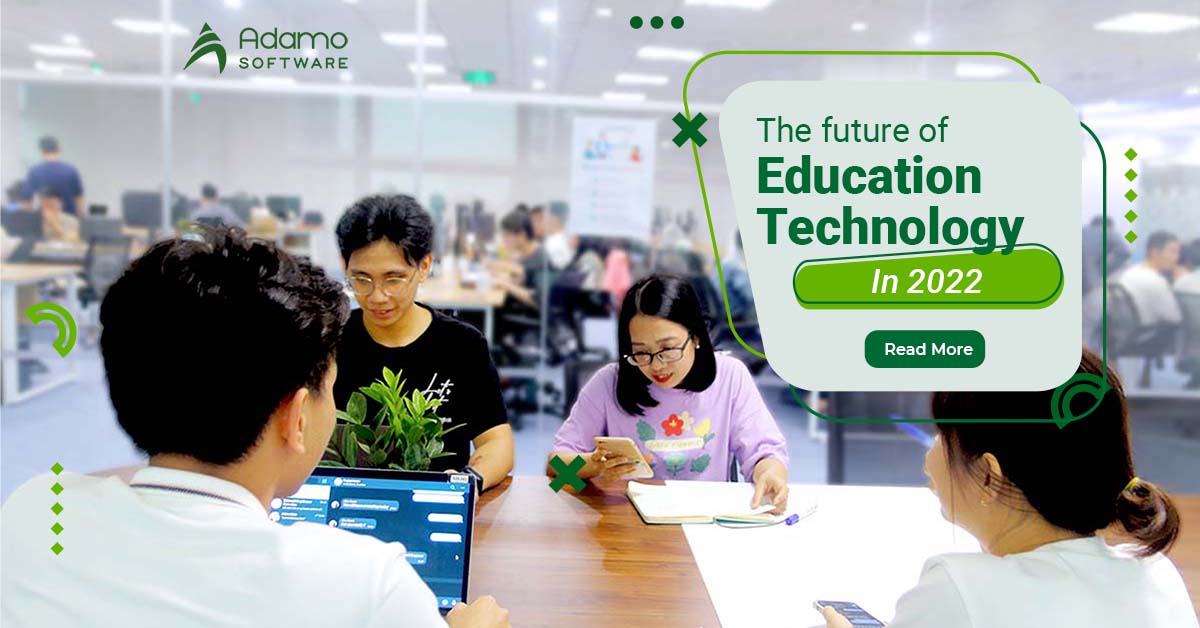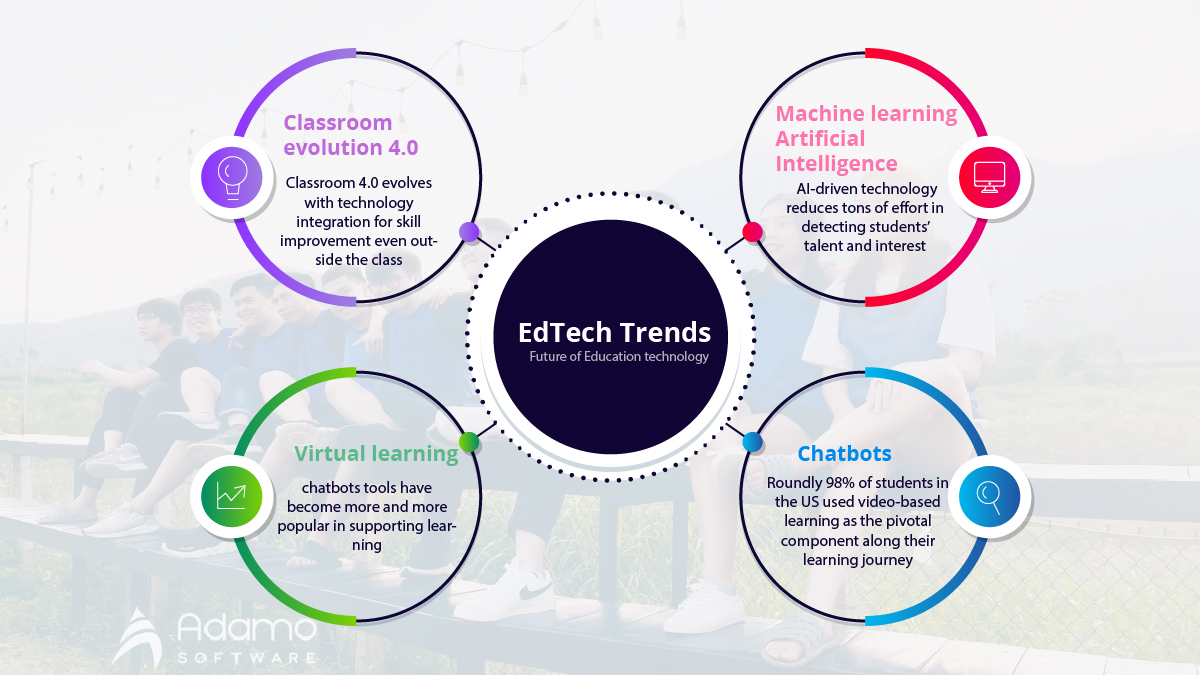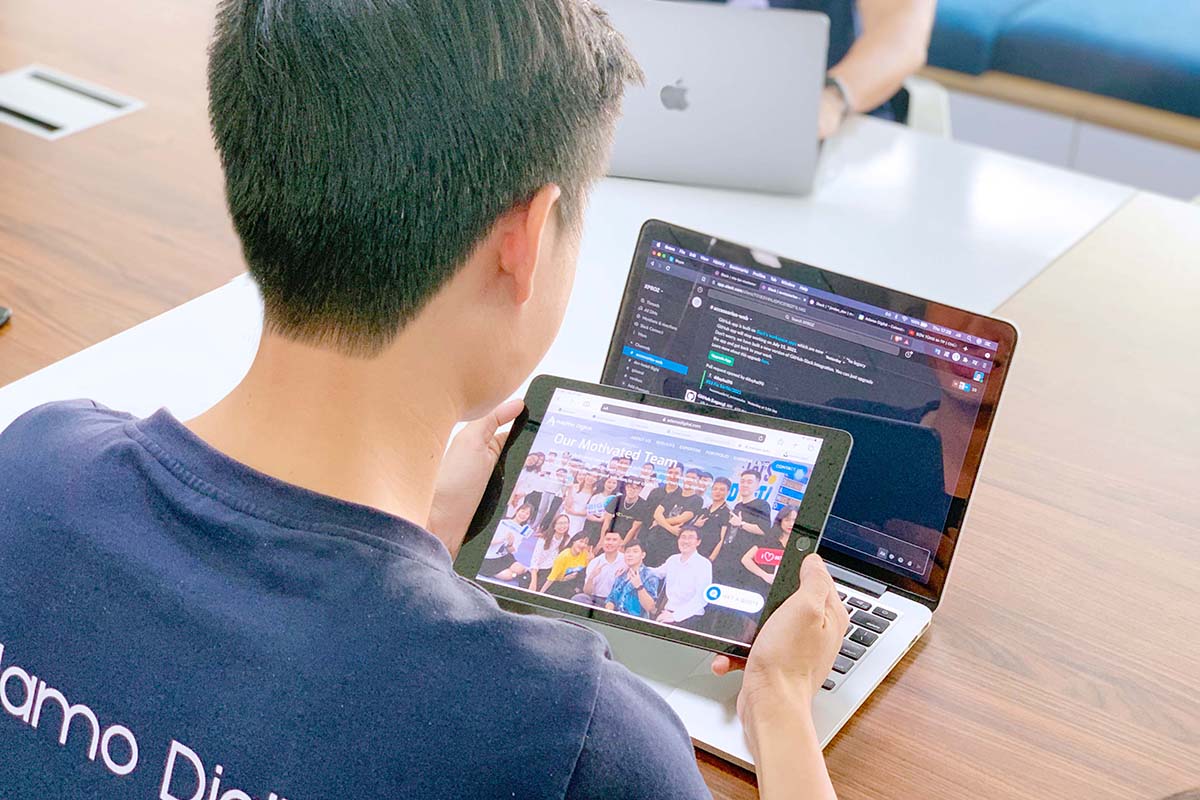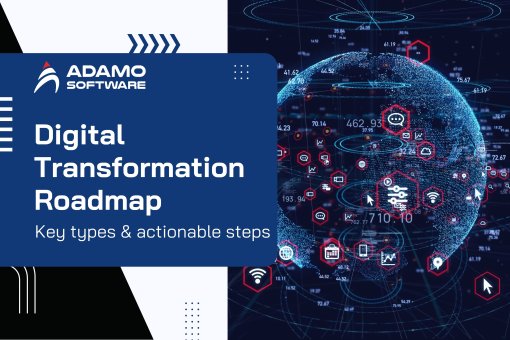The future of education technology in 2022: reveal hidden opportunities

The educational movement has been captured as improving connectivity and future of education technology applied in learning landscapes that put EdTech at the innovation heart.
Many countries chose to change the way students leaning after covid 19 cases occurred. Instead of going to school and sitting together in a physical classroom, many students and instructors have to join virtual spaces with online meeting platforms as Zoom, Google meets, Microsoft team, and more. After two years of the pandemic outbreak, the education industry has to face dramatic disruption that a new normal has set.
Virtual learning or distance learning is currently the current and future of education technology. Accordingly, education software development tends to be the movement impetus among the whole industry. We will draw you a comprehensive picture, showing the future of education technology from 2022 to beyond.
The future of education technology
In fact, even before the COVID19 outbreak, virtual learning enjoined incredible growth as the support of future education technology. In western countries, the launching of online course provider platforms such as EdX or Coursera has brought the concept of distance learning closer to learners across the world. The success of those platforms gives the right to EdTech evolution, which put the technology at the center of the development era. Hence, the probable future of education technology would run around electric connectivity and software integrated education.
How will technology change the education system in the future
Education technology tends to offer a seamless learning experience to students even when they are unable to go to class. It made sense amidst COVID19 when all schools shut down to deter the pandemic from spreading. In this case, demand for online learning surged, generating a huge benefit to market leaders.
Zoom, a video conference communication app, refers to a typical example. By 2020, the app was seen a dramatic increase in user growth, reaching over 480 million new downloads count. At the end of 2020, they hosted over 45 billion minutes of online conferences each day. Starting from Quarter 2 of 2020, when schools and workplaces closed, the annual meeting minutes hosted in Zoom lifted up over 260 times from 100 billion minutes to 2.6 trillion minutes.
Although the initial vision of Zoon refers support business conferences, they also applied a shift to serve students and teachers. Currently, Zoom has launched a new group video chat for students in some selected countries. USA, Japan, and Italy were the three test markets. That strategy is seemingly the very first step for Zoom to dominate the distance learning system.
The fact that COVID19 is not the only factor influencing digitalization in education. The transformation process has occurred for several years, in which that technology application disrupted the way teachers and instructors run a class. Accordingly, the impact of the smartphone on education has changed the thought of smart devices would induce adverse effects on the learning process. Currently, using online learning apps is commonly applied in many schools, used for homework submission, grading, communication, and more.
Using virtual learning platforms, students could handily collaborate and catch up outside of learning time. It enables sufficient teamwork activities in learning. With the support of technology, tasks, including information research, auto record, report creation, and more, can be done faster. Besides, cloud-based education has become more popular over time. Many experts predict a future of data sharing efficiency, boosting the learning results and assuring education equality amongst parts of the world.
Also read: Impact of smartphones on education: the dawn of digital learning
How technology is changing the future of higher education
British Council predicts a perspective of a fiercely competitive job market regarding the employment pressure in 2025. Accordingly, the role of higher education in the current world has to be concerned comprehensively.
In this case, many universities expect the future education technology in higher education would help college students prepare for their futures:
_ Credit scoring system: obviously, grading is seemingly a signal of student performance. Traditional grading systems over time reveal several weaknesses of scalability. Obviously, learning is a long journey. At some points, it cannot reflect the whole process. The digitalization of the credit system opened a new path that added more engagement to the study. The entire process transformed into a game. The learning performance can be accessed more comprehensively instead of grading exams and assignment only.
_ Tuition system from traditional learning to subscription-based learning, in which students only pay in parts. Driven by the booming of online learning, schools have to advance their tuition system in favor of extra student payment options.
_ Curriculum accessibility: the modern advancement in the classroom help students to deter absences when they have to leave. Education software and application development solutions provide tools for instructors offering transcripts, records, exercises, or other forms of learning materials to absent students. The future of education technology would be tackling the challenges of curriculum accessibility to bring more equality in education.
_ Decentralized learning: In the past, the restriction in education technology and infrastructure required students to move to the university campus, especially to study abroad. The birth of cloud-based computing and virtual learning platforms enables decentralized learning. Students could adopt equal education quality at home. The on-campus study currently is not the fundamental choice of many learners. Instead, they have more options to consider.
EdTech trend (Update 2023)

Obviously, any innovation in the education industry promotes the human-centered methodology. The EdTech trend is not about future education technology, it mentions how students, teachers, schools, and other participants benefit from emerging technology advancements.
1. Classroom evolution 4.0 – future of education technology
The concept of personal learning tends to be the heart of digital classroom 4.0 self-paced learning, becoming more and more popular these days, which empowers students with higher decision-making power in their own learning process. Following the student-centric approach, classroom 4.0 enable choosing their syllabus based on interest and self-ability.
Classroom 4.0 evolves with technology integration for skill improvement even outside the class. According to McKinsey insight, roundly 60% of teachers and students have been familiar with at least one automated self-paced teaching or learning.
Additionally, analytics and automated insights refer to the prevalent application of classroom 4.0. Embracing the power of future education technology, each student would be the center of the models, deterring any person from lagging behind. Accelerating a high level of customization in learning, classroom 4.0 lets students become an architect of their study with more responsibility in their pocket.
2. Applying machine learning and artificial intelligence
One of the most motivations for classroom 4.0 is AI in education. When it comes to the custom curriculum for each student, many people suspect it is a real possibility that design learning structures. Obviously, the traditional method needed extreme effort and money to create common curricula. So, how can we get customization suitable for each individual?
The answer is AI- Artificial Intelligence. AI-driven technology reduces tons of effort in detecting students’ talent and interests that automatically generates a fitted curriculum for each of them. One typical example named Duolingo damaging the effect of traditional learning. Some studies proved that by spending roundly 35 hours learning with Duolingo, students would get all the knowledge of a whole semester in school.
Obviously, virtual learning or self-learning highly depends on each individual, but it somehow proved the possibility of AI-driven application.
3. Chatbots
Not limited to eCommerce, chatbot tools have become more and more popular in supporting learning. Detering delay of human connectivity, chatbots are designed to create interaction between students and computers. Basically, this interaction type induced extended interruption, improving the user experience.
With chatbot technology, schools could handily extend their teaching services over the physical capacity. In some way, it could ensure education equality among developed and developing countries. Accordingly, chatbots help with reducing paperwork in grading and generate feedback immediately. Some research showed that it performed 90% more accurately than manual execution by teachers.
Also supporting classroom 4.0, the chatbot supports self-paced learning, which automatically collects and tracks student performance. Hence, it would generate a comprehensive guide and support based on those results.
4. Virtual learning or video learning platforms – future of education technology
Current and future education technology put virtual classroom app and e-learning portals at the heart that video learning would soon dominate the way of studies. A survey done in 2020 revealed that roundly 98% of students in the US used video-based learning as the pivotal component of their learning journey. Besides, almost all schools and universities confessed to using video to support their curriculums in many ways.
Other research proposes the effectiveness of video-based learning in improving student satisfaction and achievement by 90% and 80%, respectively. At present, the application of videos in studies can be seen at:
_ Using as learning materials for lectures delivery and assignments
_ Using as a guideline, flipped instruction to demonstrate lessons
_ Feedback provided thoroughly with video record
_ Balancing among online and offline learning processes

Classroom of the future
Similarly, the classroom of the future in some scientific movies enjoyed the advancement in technology put more power into the human hand. Virtual reality in education refers to supporting classroom simulations at a high level. Additionally, the future of education technology in high-tech classrooms would build a dream classroom. What are they?
High tech classroom: the future of education technology
In the future, we expect a smart classroom full of digital advances leveraging both smart Hardware and education software development in delivering lessons. From kindergarten to higher education, technology in education is sneaking into every corner of the classroom.
The fact that high-tech classroom of the future needs the balancing of creativity and finance. In other words, the smart classroom could induce more serious inequality across countries. Developed countries would handily adopt a high-tech classroom while developing and under-developing countries get trouble filling the gaps.
| Smart components of future classroom | Expression |
| Creative space | Provide tiered sittings for each student for internet connection |
| Projectors | For displaying interactive images, VR videos, and more |
| Smartboards | Coming over the traditional whiteboard, smartboards enable users to write with several types of markers, which would automatically record the writing history. |
| Smart tables | Unlike a conventional study table, the smart table could replace a touchable screen or huge computer. |
| Smart devices | Using laptops, tablets, smartphones, VR headsets, and more in classrooms. |
| Digital textbooks | Replace physical textbooks in learning, digital textbooks allow a direct connection with online databased. |
| Audio enhancements | High-quality speakers or wireless microphones to support speakers in large classroom spaces. |
| Control centers | Centralize remote to control all digital devices for smooth lecture operation |
| Networked learning | Allow students, teams, teachers to collaborate more efficiently with the networked learning environment. It makes sure all are on the same page. |
Future education system – Innovation of education software development on the go
One innovative educational program proposed by some leading universities aims to accelerate digitalization technology by improving instructors’ skills. Accordingly, this program tries to help teachers to advance in curriculum design, communication, and leadership skills. It suggests applying technology in teaching activities.
Another realistic project called “Passport to Education” supported the school tuition system that is currently helping students to overcome study debt. This program follows a subscription-based tuition model to lower the cost of studying. Providing monthly payment plan options combined with online course choices makes the study more affordable.
In terms of learning structures, the future education system would be technologies supporting self-learning or flip learning spaces. Next-gen education would empower students to self-explore knowledge instead of relying on teachers. In that future, homework would come before lessons. Leveraging current education technology development to prepare the best future of learning for students, they could use online resources, databases, and more to reinforce their wisdom.
Obviously, education 4.0 cannot eliminate completely traditional learning methodology. Experts expect the combination of two kinds of education into blended learning. Accordingly, future education would focus on offering a technology-rich environment, where keep all the advantages of the close relationship between students and teachers. No matter the technology innovation, it cannot replace the human factor in the education industry.











